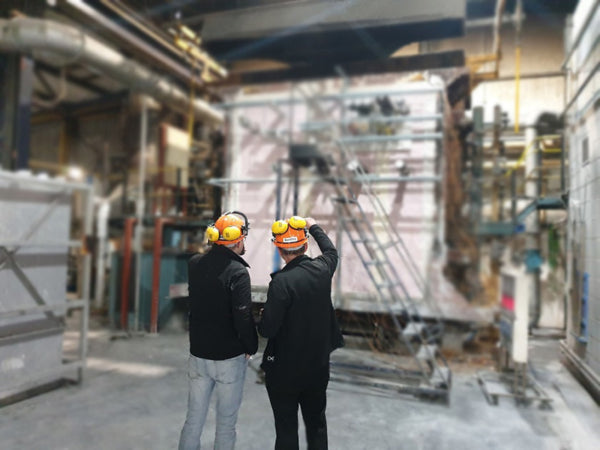To demonstrate.
To clearly show the existence or truth of (something) by giving proof or evidence.
In the last year, competency has become the topic of trade shows and training events, a discussion held in boardrooms and on LinkedIn, and the chosen subject of articles and podcasts.
It has woven and embedded itself into the shifting foundations of the industry we love, pushing us to change through new regulations, frameworks, and expectations. But let’s not forget the growing desire to put fire safety at the forefront of all project decisions.
Emerging from the errors of the Grenfell Tower fire, the lack of competency found in the Public Inquiry serves as a stark reminder that the industry must do better. Since the tragedy of Grenfell, the industry has seen the introduction of the Building Safety Act 2022, which has made demonstrating competency for construction workers, and principal contractors and designers a legal requirement.
However, we believe this competency requirement should also apply to all those involved in the design, build, and maintenance of a building. This, therefore, includes manufacturers like ourselves!
Only recently were we asked how we demonstrate our competency as a manufacturer, which forms the basis of this article. But first, we’ll explore competency as a whole: what it is, the regulations around it, and some ways it can be demonstrated.
First things first – what is competency?
Section 35 of the Building Safety Act defines individual competency for those carrying out any building or design work as having “the skills, knowledge, experience, and behaviours” to carry out their roles in line with building regulations.
These qualities have modelled the foundation of the SKEB framework, which have been defined by the FIS (Finishes and Interiors Sector) as:
- Skills: The practical application of knowledge learnt through on and/or off-the-job training.
- Knowledge: The information, technical knowledge, and ‘know-how’ the individual needs to successfully carry out their duties.
- Experience: The enhanced knowledge or skill acquired through practical experience.
- Behaviours: The mindset or approach required for competence, across the entire occupation.
Regulations, requirements, competency
Now, you may be thinking, how can a concept like competency become a legal requirement? How is it measurable?
“(1) Building regulations may, in relation to any work, impose competence requirements on—
(a) any appointed person, or
(b) any prescribed person.
(2) A “competence requirement” is a requirement relating to—
(a) the skills, knowledge, experience and behaviours of an individual;
(b) the capability of a person other than an individual to perform its functions under building regulations.
(3) The regulations may require an appointed person who is not an individual to give an individual acting under its control who has the appropriate skills, knowledge, experience and behaviours the task of managing its functions as an appointed person.”
In short, the requirement calls for those involved in the design or build of a high-risk building to demonstrate they are competent to carry out their work in line with regulations. Demonstrate is the keyword here!
Dutyholders are also responsible for ensuring their employees, including any hired subcontractors and other personnel, demonstrate their competency. Say, for instance, an individual is undertaking training to meet competency requirements, it is the dutyholders’ responsibility to ensure they are appropriately supervised while carrying out any work.
So, what does demonstrating competency look like?
Competency is still somewhat of a grey area. And having to think of ways to demonstrate it may feel a little overwhelming due to there being so much information out there!
Therefore, here are just a few ways in which competency can be demonstrated under the Building Safety Act:
- Qualifications and training – gain the skills and knowledge needed to perform your role and continue with CPD training to stay up to date with regulations and best practices.
- Accreditation and certification – engage with third-party certification schemes that assess your competence and enrol in competence schemes.
- Clear documentation – create records of all who are involved in the project, including any qualifications, experience, and training, and show that they have worked on similar projects.
- Collaboration – communicate clearly with all parties to ensure everyone is on the same page regarding the design and build of the project.
- Industry standards and regulations – ensure you are following up-to-date guidance to guarantee you are building compliantly.
And how does Quelfire demonstrate it?
If you’ve made it this far – thank you for sticking with us! So, let’s take a closer look at how Quelfire demonstrates the SKEB framework.
Skills
First up are skills. At Quelfire, we are involved in many types of projects across the UK. This level of involvement gives us great exposure to the real-life challenges faced on site and allows us to connect with those working on the developments.
Through this collaboration, we gain more insight into the types of applications that need fire testing, enabling us to provide the industry with quality test evidence (if the scenario can be tested!).
Fire testing is an area in which we take immense pride! The level of skill that goes into re-creating scenarios seen on site in a test condition should not be overlooked. The quantity of tested details we have obtained over the years is a testament to our commitment to protecting people and property, which has developed through years of on- and off-the-job training.
Further, the product development team creates our display demo boards in-house. Our team’s practical skills ensure that we don’t just advise how our products should be installed, but show we have the skill to install our products in line with the test evidence and regulatory standards. This has proved handy when our technical team has conducted practical on-site training.
Knowledge
With the ever-changing industry, expanding on and refreshing your knowledge is vital to staying up to date with best practice and regulations. One way we do that is by attending industry events. From events where we take the stage alongside other industry professionals to those we attend and listen to the discussions; we engage with the industry at every level.
Our presence at trade shows such as London Build and the Fire Safety Event demonstrates this. Both are prominent shows in our industry! They help us tap into the industry in an informal but effective way, helping us to support our partners better, improve our offering, and understand the needs of the evolving market.
At London Build, we have had the opportunity to host panel discussions, which is an excellent way to learn from fellow panellists on fire safety topics. In 2023, we led a discussion on standardising processes in firestopping with key players of the Passive Fire Knowledge Group. Collaboration is key!
Our team, particularly the technical and sales team, undergo ongoing CPD training and have passed their IFE Level 2/3 exams. The marketing team also undergoes weekly industry research. This is to stay up to date with best practices and to advise customers in line with the Building Safety Act.
We are also proud members of the ASFP’s technical guidance groups, where individuals from across the industry come together to reach solutions for industry challenges.
Experience
Quelfire has been an established company since 1977 – that’s over 45 years of experience at the forefront of service penetrations! Over the years, we have seen the introduction of new regulations and best practices.
Moving with the industry as it evolves is critical. Fire test evidence, for instance, is vital in our industry, and we’re seeing more complex applications being suggested for testing. But only through our experiences and knowledge do we understand the complexity of firestopping and those applications that can be fire tested and those that cannot.
Behaviours
The behaviour side of the SKEB framework is non-negotiable. How can the correct skills, knowledge, and experience be acquired without the correct behaviour? It is your behaviours that push you to do the right thing, and to act when something isn’t suitable.
Our core values underpin everything we do: responsiveness, consistency, reliability, honesty, and loyalty. These values create the culture here at Quelfire, and ensure we are working in line to protect people and property.
For instance, we are not afraid to say ‘no.’ If we don’t have a tested solution for an application, we will always recommend the customer change their application so a detail can be used rather than trying to sell the products. That is why we aim to do at least one fire test per month, to provide the industry with primary test evidence instead of engineered judgements.
At Quelfire, we strongly believe in an evidence-based approach to firestopping. This is the only way to guarantee the performance of products in the case of a fire.
Another example of our behaviours is knowing when something is outside our competence. In the past, we have had questions about fire dampers that we do not know the answer to. In these cases, we will direct our customers to those who do know the answers, for example, the damper manufacturers.
For us, it’s not just about the sale. Our sales team works by following the ‘S.A.F.E.’ method:
- S – speed
- A – agility
- F – follow-up
- E – evidence-based, ethical, excellence, enthusiasm, energy
This ensures our customers are equipped with the knowledge and understanding to go and make an informed decision on site. And ultimately, to ensure they are building compliant buildings and making fire safety a priority.
We always encourage and ask questions and don’t just presume to know. From questions about the specific details of your application to challenging you to ask ‘why’; we operate transparently.
One of our primary missions at Quelfire is to educate the industry rather than providing an easy answer. Our educational resources, such as our Knowledge Hub, YouTube channel, and LinkedIn page, are dedicated to supporting our customers.
While the Grenfell Tower was a wake-up call to the built environment, the Building Safety Act is paving the way for cultural change. The industry is changing, and we must change with it.
The demonstration of competency is a new concept. And one that we know we have a way to go to achieve it fully.
But the time to start is now. So, what about you? Have you started?
Other sources:
Building Engineering Services Association. (n.d.). Roles and responsibilities under the Building Safety Act. The BESA. Retrieved from https://www.thebesa.com/building-safety-act/roles-and-responsibilities
Browne Jacobson LLP. (2022, September 27). Building Safety Act 2022: New duty holder and competency regime. Retrieved from https://www.brownejacobson.com/insights/building-safety-act-2022-new-duty-holder-and-competency-regime
Health and Safety Executive. (2023). Building safety competence information for principal contractors and principal designers [PDF]. Retrieved from https://consultations.hse.gov.uk/bsr/building-safety-competence-information-pc-pd/supporting_documents/Building%20safety%20competence%20information%20for%20principal%20contractors%20and%20principal%20designers.pdf


